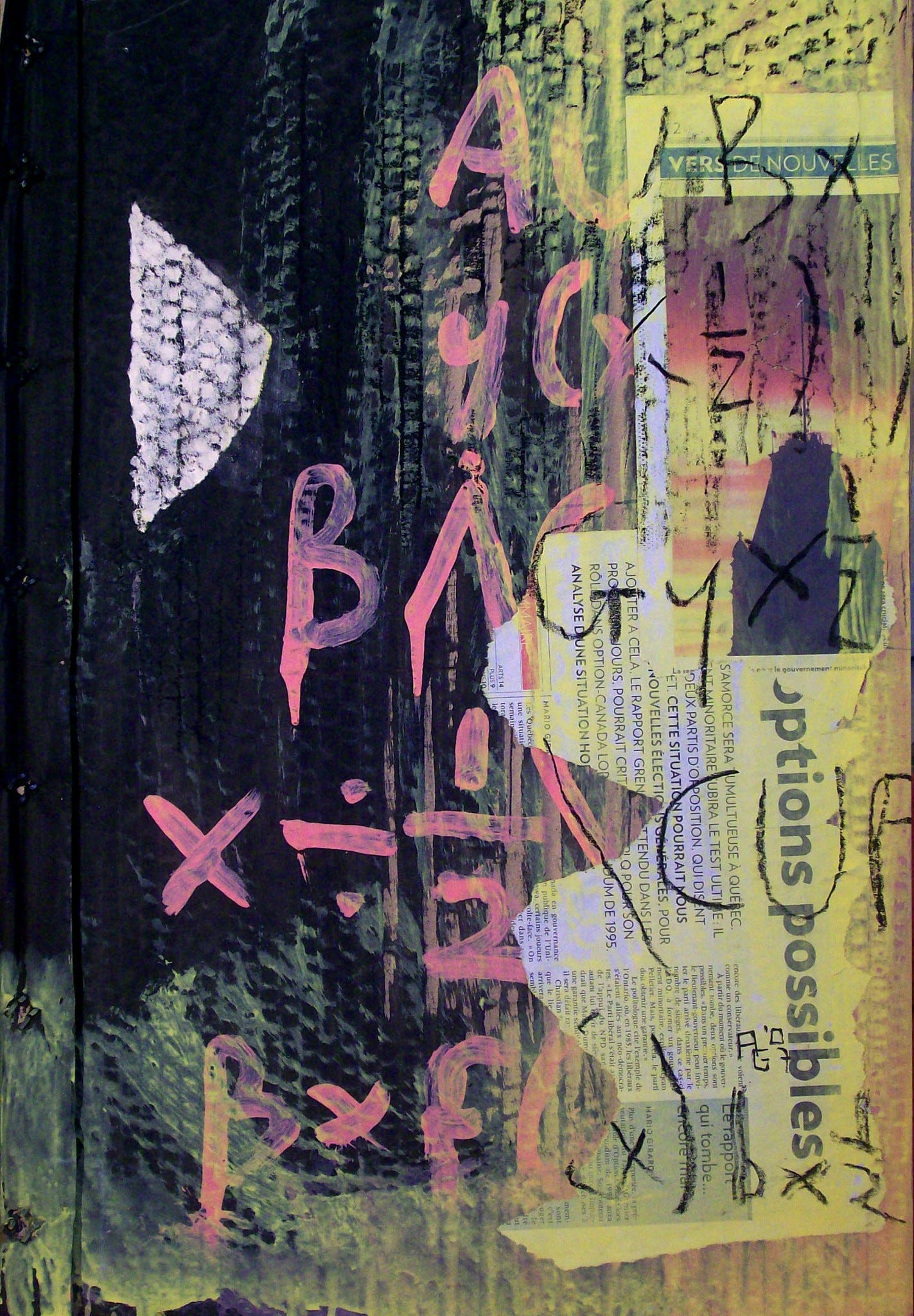The Writing-Without-Writing Project: A Recapitulation
Where I write of an old project, its concept and inspiration.
This is a painting I made in 2007 in a project I came to call the "Writing-Without-Writing" Project. Will explain the concept in a moment.
By the time I started this new project, I had already been practicing The Feldenkrais Method for 2 years (I would go on to practice it for over 20 years). I read all of the works of Moshe Feldenkrais, who invented the method. The method is a form of Somatics, "a field within bodywork and movement studies which emphasizes internal physical perception and experience."
For me, my Feldenkrais practice was largely about focusing my attention of my proprioceptive sensations, becoming fully aware of my body while moving, and exploring the space my body inhabits, the interior space that IS my body, as it is felt and experienced, as it moves. It was a profoundly philosophical, phenomenological experience for me, and went on to influence my thinking, moving, and art ever since.
I became interested in kinesiology and the "physiological, anatomical, biomechanical, pathological, neuropsychological principles and mechanisms of movement". Here is how this relates to "Writing-Without-Writing".
In 2007, I began making large paintings where I was doing a kind of "asemic" writing, a "wordless open semantic form of writing". I called them arabesques or graffiti. I was trying "to imitate writing". That is, I was engaging in the physical act of "writing", of putting down marks on a substrate, except none of what I wrote actually made any sense. I wanted to achieve a level of semblance to actual writing so that people, when they saw my painting, would be able to make some "sense" of what I wrote, without my having actually written anything sensible.
I mixed alphabetic lettering with symbols from mathematical expressions, and invented symbols which had no meaning whatsoever, but which had a visual aspect to them that I found beautiful. I was merely improvizing and I made dozens of these paintings, exploring the act of writing in its biomechanics, the movement of the hand and arm as it writes in coordination with the eyes, the fine motor control of the hand and especially the fingers, the way that the brain uses retroaction in a feedback loop to gauge the positions of the members - via proprioception - and to calibrate and recalibrate the movements, etc.
The result, to me, is visually remarkable. I used elements of collage with actual writing, to help with the visual sense and experience of seeing writing on a canvas. I painted on cardboard because that was the most readily available substrate I could find, and I could find it in recycling containers, so it didn't cost me anything. As I said, I made dozens of these kinds of works, but unfortunately the entire collection was destroyed by water damage. I had to throw all my paintings, my entire project, into the garbage. The loss was considerable, at least 2 years of deep experimentation. Thankfully, I had photographed many of these works, so their memory still lives on, allowing me to share one of these "Writing-Without-Writing" pieces with you today.
Have you ever thought philosophically about the act of writing, as you were writing? Are you even aware of what is going on physically and in your brain as you engage in putting marks on paper or other substrate? You could give it a try. It can be done with any movement. Just become aware of the movement as you are doing it. The Feldenkrais Method is much more complex, and involves thousands of separate movements, and is led by a practitioner who guides us through our exploration of our bodies-in-movement, but anyone can focus their attention on their moving bodies at any time.
I think this is a very grounding experience. I can only recommend it to my viewers. In any case, I hope you enjoy my painting and this accompanying text. As usual, if you feel so impelled, click Like and/or leave a comment. This has been a recapitulation of the "Writing-Without-Writing" concept.
Sincerely,
A.G
A.G. © 2007-2023. All Rights Reserved.


